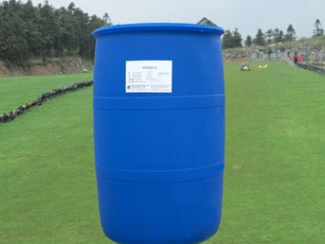With the maturity of the market, printing and dyeing auxiliaries are also mature, and the high-quality auxiliaries of various manufacturers are gradually recognized by the industry. We are glad to see that more and more printing and dyeing enterprises begin to choose qualified suppliers, and more and more auxiliary manufacturers are moving towards the market on the basis of qualification. Many textile printing and dyeing enterprises pay more and more attention to the selection of printing and dyeing auxiliaries. Recently, the requirements of ecological and environmental protection for textiles at home and abroad are more and more strict, which leads to the problems of environmental protection and economy in the selection of printing and dyeing auxiliaries.

Surfactant has poor decontamination ability, and usually can not be mixed with anionic surfactant, but it has good antistatic and softness, good sterilization and disinfection ability, and can give good softening effect to fiber, so it is an important and widely used softener at present.
The common types are tertiary amine salts and quaternary ammonium salts. Among them, tertiary amine salts are cationic only in acidic medium, while quaternary ammonium salts are cationic in any medium, so they are widely used. Bis (octadecyl dimethyl) quaternary ammonium salt is a fabric softener with outstanding softness. It can obtain ideal effect when the dosage is only 0.1% ~ 0.2%. It also has rewetting and antistatic effects, but it has high toxicity and difficult biodegradation; As a softener, dhtdmac has excellent softening effect, but it has poor antistatic and biodegradability, and is easy to be absorbed by sludge and pollute farmland in sewage treatment. In the early 1990s, it was stopped in Germany, the Netherlands and other countries. The new generation of green products are: quaternary ammonium ester, amidoethylimidazoline quaternary ammonium salt, triethanolamine quaternary ammonium salt and phosphonate quaternary ammonium salt.
A kind of surfactant, which is widely used, can be combined with other types of surfactants to play a synergistic and synergistic role. It has the functions of defoaming, emulsifying, cleaning and dispersing. The main defoamers are fatty amides and polyoxyethylene dialkyl ethers; There are three series of emulsifiers: alkyl phenol polyoxyethylene ether (OP Series), dehydrated sorbitol ester of fatty acid (s Series), dehydrated sorbitol ester of polyoxyethylene fatty acid (T Series). Leveling agents such as Pingjia o, Pingjia O-15, etc. Although nonylphenol polyoxyethylene ether (TX-10) can be biochemical treated, its decomposition products are still phenols, which have fish toxicity and can damage the human reproductive system. Some European countries have passed laws to prohibit the use of TX-10, which can be replaced by natural fatty alcohol polyoxyethylene ether or sorbitol dehydrate with low toxicity. In addition, sugar based surfactants, alkyl glucosides (APG), sucrose esters (SE) and alkanolamides have attracted much attention due to their excellent application performance, low toxicity and excellent biodegradability.